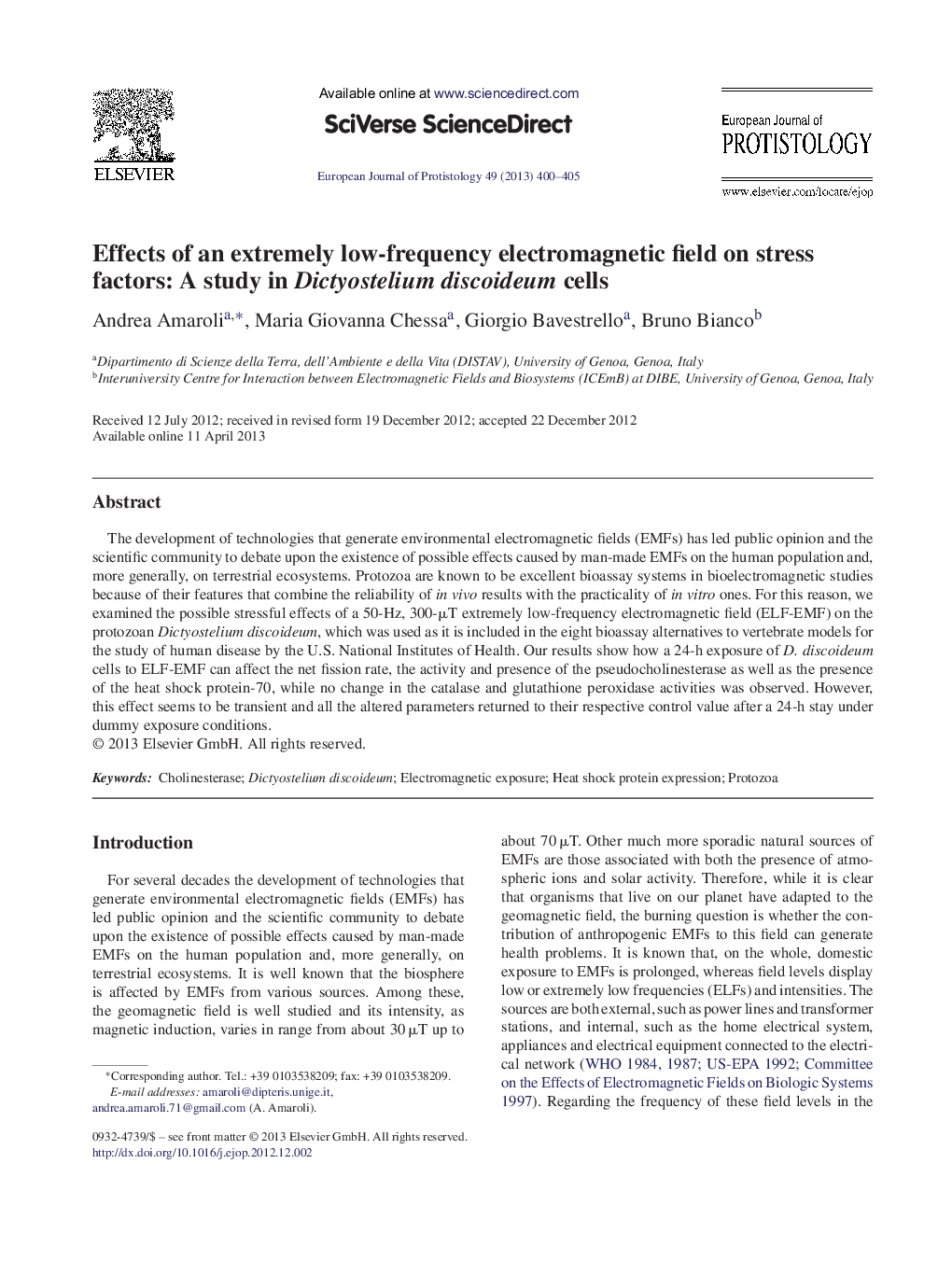| Article ID | Journal | Published Year | Pages | File Type |
|---|---|---|---|---|
| 8383343 | European Journal of Protistology | 2013 | 6 Pages |
Abstract
The development of technologies that generate environmental electromagnetic fields (EMFs) has led public opinion and the scientific community to debate upon the existence of possible effects caused by man-made EMFs on the human population and, more generally, on terrestrial ecosystems. Protozoa are known to be excellent bioassay systems in bioelectromagnetic studies because of their features that combine the reliability of in vivo results with the practicality of in vitro ones. For this reason, we examined the possible stressful effects of a 50-Hz, 300-μT extremely low-frequency electromagnetic field (ELF-EMF) on the protozoan Dictyostelium discoideum, which was used as it is included in the eight bioassay alternatives to vertebrate models for the study of human disease by the U.S. National Institutes of Health. Our results show how a 24-h exposure of D. discoideum cells to ELF-EMF can affect the net fission rate, the activity and presence of the pseudocholinesterase as well as the presence of the heat shock protein-70, while no change in the catalase and glutathione peroxidase activities was observed. However, this effect seems to be transient and all the altered parameters returned to their respective control value after a 24-h stay under dummy exposure conditions.
Related Topics
Life Sciences
Agricultural and Biological Sciences
Agricultural and Biological Sciences (General)
Authors
Andrea Amaroli, Maria Giovanna Chessa, Giorgio Bavestrello, Bruno Bianco,
